Chesterton Valley Golf Club - Dream a little dream

During this period, the idea of a golf course began to germinate. In discussions with Paul Hinton, then golf professional at Bridgnorth Golf Club, they identified the need for a quality course open to all on a pay and play basis. The site at Chesterton seemed ideal; easily accessible, with a well drained sub-soil and well contoured within open Shropshire countryside. And, so it was, that plans for a 9-hole golf course were hatched.
At this time, a property to the south of the holding was developed into a desirable country house and was sold to release funds to develop the site.
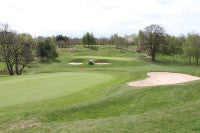
The current 15th green was the first to be completed - additionally, hundreds of trees were planted, undergrowth cleared, existing trees pruned, greens and tees laid out and drainage and water features introduced.
In 1993, the 9-hole course was opened and, although young and immature, proved an instant success.
It was clear to see the potential the site had to offer and that, with additional acreage, an eighteen-hole complex could be sustained. So Mike negotiated the purchase of neighbouring Deepdale Coppice and Phillips Wood. Despite local concern about the extension of the golf course, reassurances enabled the sale to go ahead and twelve wooded acres were added to the existing holding.
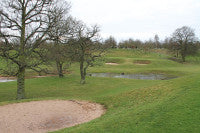
The new clubhouse and the full 18-hole course were officially opened in 1999.
And, so to today. The last decade or so has seen further work, both on the course and behind the scenes. A new underground storage complex has been constructed to house the greenkeeping equipment. This has minimal impact on the natural surroundings and gives enhanced security and improved facilities for the greenkeeping staff.
There has been further landscaping work carried out to include the extending of both the current 7th and 3rd holes, the installation of a fully automated irrigation system and new tees added.

Today the course plays to a Par 71, with four par 5s, five par 3s and nine par 4s; it now presents itself as a wonderfully maturing, well wooded and enjoyable course.
As with all new golf courses, it takes time for them to mature, particularly in terms of greens performance and overall aesthetics, and especially in terms of tree plantings. In the early years, hundreds of trees were planted alongside mature oaks, beeches and birch trees to define fairways, tees and greens.
Mike also built a number of water features, notably by the 1st, 6th and 7th greens; the lake at the 6th is now a wildlife haven for many birds. He and his greenkeeping staff are constantly looking at ways to improve the course and have continued to develop the site, including further tree planting.
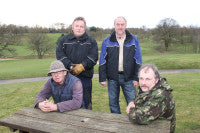
As with any golf club, the biggest investment is in machinery. A Toro Greensmaster and two John Deere triple cylinder mowers cut the fine turf areas.
Greens are cut on a daily basis, at around 5mm in the winter and to 3mm during the growing season as conditions allow. Tees are mown at 10mm.
The club has also invested in a Toro 6700D seven gang cylinder mower for cutting the fairways. These are cut twice a week at around 15-17mm.
Even with such a monster machine, it generally takes two days to cut the fairways as they are very undulating and steep.
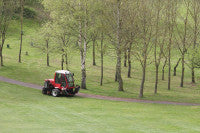
All the greens are soil push up that were sculpted out of the existing landscape using the local soils ameliorated with sand. No formal drainage systems were installed at the time of construction, but a great deal of thought was given to falls to enable the discharge of water before committing to any localised drainage.
As it turns out, most of the greens have performed well and continue to drain freely. However, some, mainly due to their low lying position, had some drainage issues, which were further compromised by the build up of thatch and deep seated compaction. These problematic greens have either been drained or rebuilt, taking the opportunity to reshape or move them to improve the layout of the course.
The monthly hole changing policy sees the staff cut four hole positions on each green and, over the course of the period, constantly change them to suit the weather and traffic.
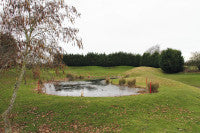
It was also interesting to note the build up of topdressing applications over the years; you could clearly see a distinct change in the soil profile, with the top 75mm being sandier than the lower part of the profile. As time goes by, the drainage potential of the greens can only improve as more and more sand dressing is applied.
In fact, Peter was already on the case and was earmarking a programme of verticutting, scarification, increased aeration and topdressing to help reduce thatch on the more vulnerable greens.

Autumn renovations commence in September with the greens being scarified in two directions using a tractor mounted Sisis T1000 scarifier. They are then aerated and topdressed with five tonnes of Bathgate straight sand and oversown with bent and fescue using a Blec overseeder.
There are over forty sand bunkers, which are raked on a regular basis to keep them clean and presentable.
As for pest and diseases, some of the greens have been quite susceptible to fusarium this year due to the prevailing wet conditions last winter. However, the course never closes due to its free draining sandy soil and will only close due to extreme weather conditions; mainly through snow.
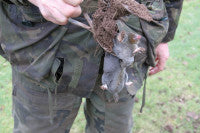
During last winter, the staff were kept busy installing localised drainage and extending one of the greens to improve its overall playing potential, along with tree work; planting and pruning to improve sight lines.
Having walked the course with Peter, you can see why it has become a popular course to play. There are many challenging holes, all with their own distinctive topography.
The course certainly keeps the greenkeepers occupied, in more ways than one, as there is always something to be done, especially when the owner is continually looking at ways to improve his course.
